-
 Want to Pamper Your Taste-Buds this Pongal? Here are Mouth-Watering Pongal Recipes You can't Miss in 2019
Want to Pamper Your Taste-Buds this Pongal? Here are Mouth-Watering Pongal Recipes You can't Miss in 2019
-
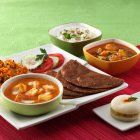 Fasting Does Not Mean Starving! Keep Your Energy Up with These 9 Delicious Navratri Recipes & Fasting Tips for Navratri (2019)
Fasting Does Not Mean Starving! Keep Your Energy Up with These 9 Delicious Navratri Recipes & Fasting Tips for Navratri (2019)
-
 Planning to Fast During Navratri? Here are 9 Quick and Healthy Recipes for Your Navratri Fast in 2019!
Planning to Fast During Navratri? Here are 9 Quick and Healthy Recipes for Your Navratri Fast in 2019!
Prasad: A Divine Offering of Food for the Gods

Prasad is typically a vegetarian dish that is given as offering to God in temples. Prasad is usually offered to God during the beginning of puja and once the puja is over it is distributed among the devotees. According to religious texts, it is believed that the prasad which is offered to god is first tasted by him. Following this, it is given to devotees as a sign of goodwill to share the blessings of God.
In some places, elaborate prasad is made in temples and later it is offered as food distribution among the devotees who visit the temples, it is also famously known as “AnnaDanam” also called “Food Offering”. It is believed that pilgrims who visit the shrine can satisfy their hunger from god’s offering.
Importance of Giving Prasad
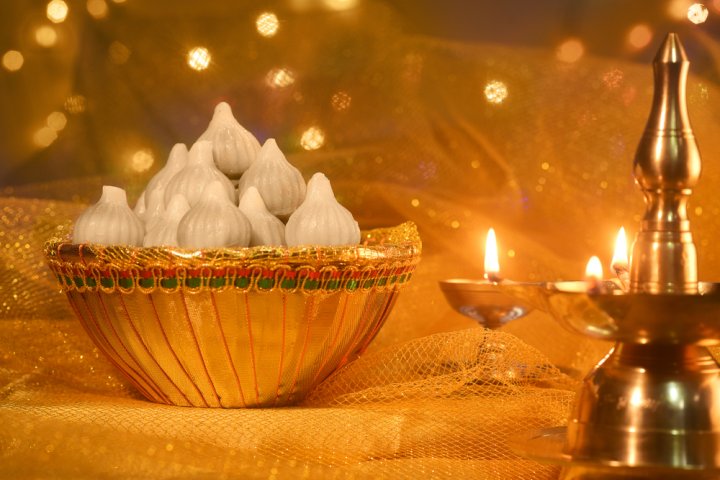
There are numerous good qualities associated with giving prasad to god and sharing it with others.
- It is believed that food offered for temples imparts divine energy present in the temple’s structure to the food. This pranic energy enables one to experience god’s divinity and to obtain his blessings.
- During puja, the five elements such as fire, air, earth, wind, and space are evoked during the recital of divine mantras. This invocation is believed to be imparted into the food that is placed as offering to God.
- Promotes a sense of fraternity irrespective of religion, caste, gender, status, language, and creed.
- To attain positive vibrations from god and to invoke his blessings.
Things To Keep in Mind While Offering Prasad
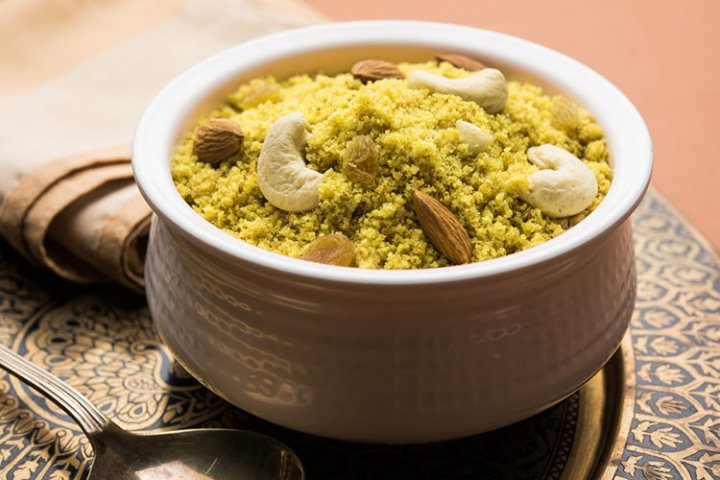
Offering prasad to god is a ritual and there are certain things to be kept in one’s mind before offering prasad to god.
- The prasad offering is typically strictly vegetarian as food that consists of animal sacrifices is not encouraged as the norm.
- The prasad offered to God is primarily satvik food with no traces of onions, garlic and mushrooms. According to Vedic texts, it is believed that these foods impart passion to humans and the presence of the items should be avoided while making prasad.
- The prasad offered to god should not be tasted by anyone before serving it.
- One should be in a calm and divine state of mind before making the prasad that is offered to god.
- While making prasad strict hygiene measures should have adhered. The utensils must be clean and the prasad has to be prepared freshly using fresh ingredients.
- The prasad must always be served with one’s right hand with humility to other devotees.
How to Offer Prasad to God?
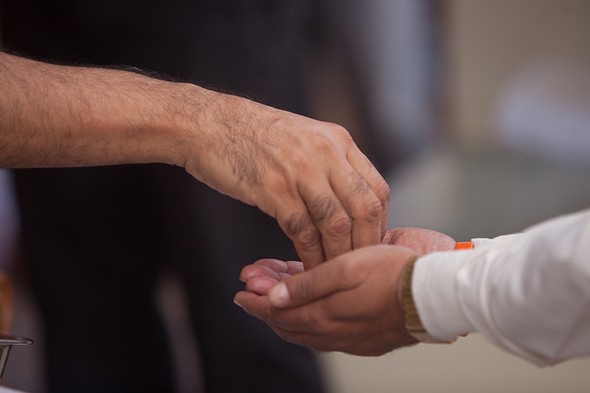
The prasad can be offered to god by following a set of customs and rituals to please God and to invoke his blessings.
- A portion of the freshly prepared prasad is placed in the clean special utensil that is reserved for god.
- Along with the prasad, a glass of clean water has to be placed as offerings to the god.
- Once the prasad offering is placed, puja is done for the lord by chanting mantras.
- Once the chanting of mantras and hymns are performed, the aarti is shown to god and prasad is left untouched for a certain amount of time.
- Afterwards, the prasad offered to god is merged with remaining food and finally offered to others with humility and grace.
10 Easy Prasadam Recipes You Can Make at Home

If you are planning to make prasad to god, there is no need to fret. There are numerous best and easy prasadam recipes you can make an offering to God. Here is a list of easy recipes that you can follow to invoke the blessings of God.
1. Kada Prasad
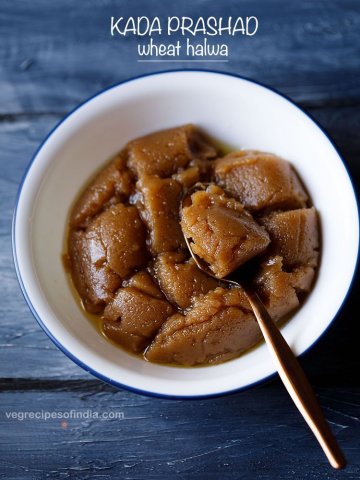
Kada Prasad is a famous offering that is offered in Gurudwaras. The recipe is velvety smooth and made from whole wheat flour and ghee. The prasad is made from minimal ingredients and is very superior in taste.
Ingredients:
- Whole wheat flour or atta – 1 cup
- Sugar – 1 cup
- Ghee – 1 cup
- Water – 3 cups
Steps
- Take 1 cup of sugar in a saucepan with 3 cups of water on a medium flame.
- Stir the solution until the sugar dissolves and starts to thicken.
- Once the sugar solution begins to boil switch off the flame.
- Place a heavy-bottomed pan and add the whole wheat flour to the pan.
- Stir the whole wheat flour and gradually add ghee into the mixture until the flour gives out a dark and nutty flavour.
- Once the flour turns dark and nutty flavour and gradually add in the sugar syrup.
- Keep on stirring the mixture until it thickens and the mixture will start releasing the ghee.
- The mixture will gradually start to thicken and will start thickening.
- Serve the prasad hot.
2. Doodh Peda
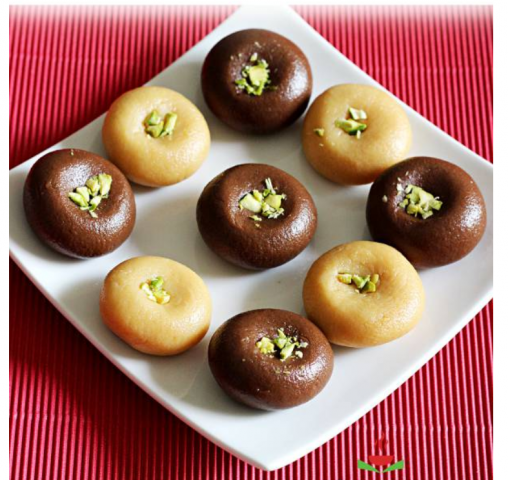
Doodh peda is a traditional dish that is made for all celebrations and festive occasions. The doodh peda is typically made from milk, milk solids and sugar.
Ingredients:
- Khoya – 1.5 cups
- Ghee – 1 cup
- Sugar – 0.5 cup
- Nuts – 0.75 cup
- Cardamom powder – 1 spoon
- Saffron – few strands
Steps
- Crumble the khoya, add it to a non-stick pan.
- Add sugar and milk to the crumbled khoya mixture.
- Add cardamom powder and saffron to the khoya mixture and stir well.
- Once the mixture starts to heat up, it will turn mushy and harden again.
- Once the mixture hardens, switch off the flame and let the mixture cool.
- Once the mixture is cooled, grease your palms with ghee and make small balls from the khoya mixture.
- Flatten the balls and place the nuts in the centre of the peda.
- You can add silver foil on top of the peda and serve them.
3. Rice Kheer Recipe
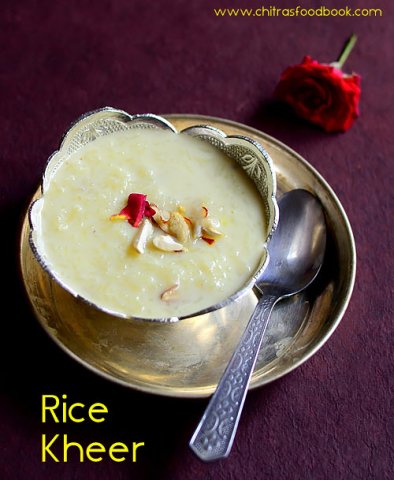
Rice kheer is also known as phirni is a famous prasad dish served in North India. Basmati rice is simmered in milk and sugar until the mixture thickens making it one of the easiest recipes.
Ingredients:
- Basmati rice – 1.5 tablespoons
- Full fat milk – 2 cups
- Sugar – 1 cup
- Cardamom powder – 0.5 teaspoon
- Chopped nuts – 1 cup
- Saffron – few strands
Steps
- Wash the basmati rice and soak in water for 1 hour.
- Add 2 cups of milk in a pan and boil gently.
- Once the milk starts to boil, add the rice into the milk and stir gently.
- Once the rice is cooked, add sugar, powdered cardamom, and saffron to the mixture.
- Once the mixture is done, add the nuts and switch off the flame.
- The mixture will begin to thicken.
- Serve the rice kheer hot as prasad.
4. Black Chickpeas Sundal
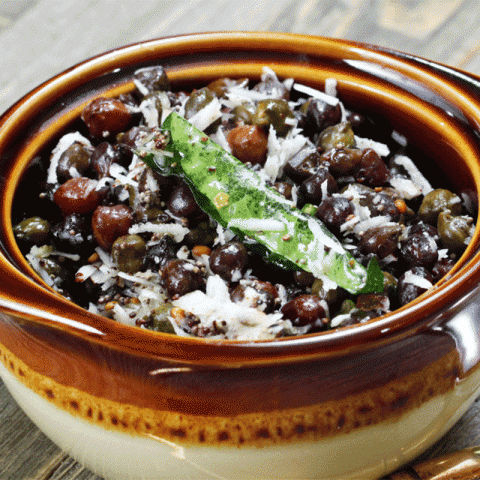
Black chickpea sundal is a famous prasad recipe that is offered to God in South India. The wholesome dish is made with black chickpeas, grated coconut, and curry leaves.
Ingredients:
- Black chickpeas – 1 cup
- Grated coconut – 1 tablespoon
- Red chilli – 1
- Urad dal – 2 teaspoon
- Green chilli – 1
- Channa dal – 2 teaspoon
- Mustard seeds – 1 teaspoon
- Curry leaves – 1 sprig
- Salt – To taste
Steps
- Soak the black chickpeas overnight or for 8 hours.
- Once they are soaked, wash the chickpeas and pressure cook them with a cup of water for 4 to 5 whistles.
- Heat a pan, once the pan is hot, add a teaspoon of oil.
- To the oil add mustard seeds, urad dal, chana dal, red chili, green chili and salt.
- Once the seasoning is ready, add the boiled chickpeas to the mixture and mix well.
- Finally, add the grated coconut to the seasoned chickpeas and mix well.
- Now the black chickpeas are ready to be served.
5. Sweet Pongal
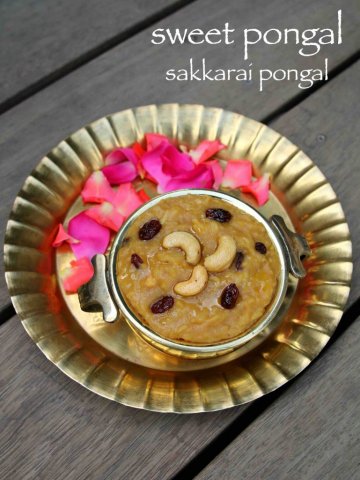
Sweet Pongal or sarkkarai Pongal is a famous naivedyam offered to gods and devotees in South India temples. It is easy and very tasty to make and requires fewer ingredients. The recipe is made with rice, moong dal, and jaggery.
Ingredients:
- Rice – 0.5 cup
- Moong dal – 0.25 cup
- Water – 2 cups
- Jaggery – 0.75 cup
- Ghee – 4 tablespoon
- Cashews and raisins – 0.5 cup
- Cardamom powder – 1 teaspoon
- Edible camphor – one pinch
Steps
- Wash the rice and moong dal and soak them for 1 hour.
- Once the rice and moong dal is soaked, add them to pressure cooker and cook until they are ready.
- In a pan add 0.75 cups of jaggery and 0.25 cup of water.
- Stir the jaggery in water till it completely melts.
- Filter the jaggery mixture to remove impurities and add it to the cooked rice mixture.
- Add the remaining water to the mixture and mix well until all the ingredients are combined.
- Add the ghee to the mixture until the Pongal is ready.
- In a pan, add a teaspoon of ghee and fry the cashews and raisins until they are golden.
- Add the cashews and raisins to the Pongal along with edible camphor to enhance the taste of sweet Pongal.
6. Puliyogare

After sweet Pongal, puliyogare is considered to be a famous savoury dish that is served in temples. Moreover, it finds prominence in numerous puja ceremonies as well. The puliyogare is tamarind rice and is a famous prasad in South Indian temples.
Ingredients:
- Rice – 1 cup
- Tamarind – lemon sized ball
- Jaggery – 2 tablespoons
- Salt
Seasoning ingredients:
- Mustard seeds – 0.5 teaspoon
- Peanuts – 3 tablespoon
- Channa dal – 0.75 teaspoon
- Urad dal – 0.75 teaspoon
- Green chillies – 2
- Red chilli – 1
- Oil – 3 tablespoons
- Curry leaves – 1 sprig
- Asafoetida – 0.5 teaspoon
To Roast and Grind Ingredients:
- Channa dal – 0.75 teaspoon
- Urad dal – 0.75 teaspoon
- Coriander seeds – 1 tablespoon
- Cumin – 0.5 teaspoon
- Mustard seeds – 0.5 teaspoon
- Peppercorns – 0.5 teaspoon
- Sesame seeds – 1.5 teaspoon
- Dried coconut – 3 tablespoons
- Fenugreek seeds – 0.5 teaspoon
- Red chillies – 3
- Asafoetida – 0.5 teaspoon
Steps to make it
- Wash the rice and cook until it is ready. Once the rice is cooked, spread on a plate and cool it completely.
- Soak the tamarind in half a cup of water and squeeze the extract once it turns mushy.
- In a pan, dry roast the channa dal, urad dal, red chillies, cumin, mustard, sesame seeds, and until they are a golden colour.
- Finally add the asafoetida ad switch off the flame.
- Heat oil in the same pan, add oil and mustard seeds, urad dal, channa dal, peanuts, green chillies, red chillies and curry leaves.
- Once the mixture splutters, add the tamarind extract, jaggery, and salt to the pan.
- Add the puliyogare powder to the tamarind mixture and mix salt and mix gradually until the mixture thickens.
- Once the mixture thickens, add the cooled rice to the mixture and stir well.
- Allow the rice to absorb the flavour of the tamarind extract before serving.
7. Malai Coconut Laddus

Another famous recipe that is served as prasad in the temples in North India. The malai coconut laddu is made from grated coconut, milk powder, and condensed milk. Moreover, one can add nuts like cashews, pistachios, and raisins to the laddu.
Ingredients:
- Dry coconut flakes – 2 cups
- Milk powder – 0.5 cup
- Condensed milk – 0.5 cup
- Cardamom powder – 0.5 teaspoon
- Nuts – optional
Steps
- Take a mixing bowl, add the dry coconut flakes, milk powder, condensed powder, and cardamom powder into the bowl.
- Mix the ingredients in the bowl well.
- Start making balls from the mixture and roll the balls into dry coconut flakes.
- You can add nuts to the mixture before making balls with the mixture.
- Now the malai coconut laddus are ready to be served.
8. Sabudana Vada

Sabudana vada is a deep-fried Maharashtrian dish that is served in temples. The sabudana vada is made with boiled potatoes, chilies and coriander.
Ingredients:
- Sabudana or sago – 0.5 cup
- Boiled potato – 2
- Fresh coriander – 3 tablespoon
- Green chilli – 2 teaspoon
- Roasted peanuts – 0.25 cup
- Salt
Steps
- Wash and soak the sago in water for around 8 hours.
- In a bowl, add soaked sago, fresh coriander, green chillies, and coriander and roasted peanuts.
- Mix them well, add the boiled potatoes to the mixture and mix well.
- Make patties out of the mixture, drop the vadas in to hot oil and fry them until they are golden brown.
- Serves the vadas hot and crispy.
9. Motichoor Laddus
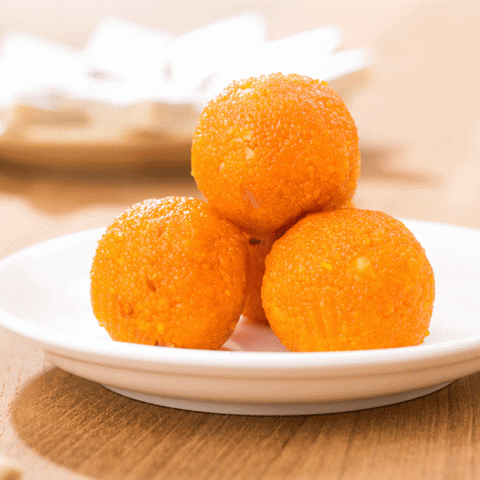
Motichoor laddoo is a famous dessert that is made as prasad and sweet during festive occasions. The famous sweet is loved by all and finds prominence among households during puja.
Ingredients:
- Besan or gram flour – 2 cups
- Sugar – 3 cups
- Water – 4 cups
- Milk– 0.5 cup
- Ghee – 3 cups
- Cardamom – 1 teaspoon
- Food colour – 0.5 teaspoon
- Baking soda – a pinch
Steps
- Add sugar to a pan, add water to the sugar and bring it to a boil.
- Add cardamom powder and edible food colour to the sugar syrup.
- In a mixing bowl, add besan, milk and baking soda to the mixture.
- Heat ghee to the pan. With the help of a perforated ladle add the batter into the ghee and fry them well.
- Soak the fried boondis into the sugar syrup until the sugar syrup is absorbed.
- Once the mixture is cooled, shape them into small sized laddus and serve them.
10. Poha Prasadam
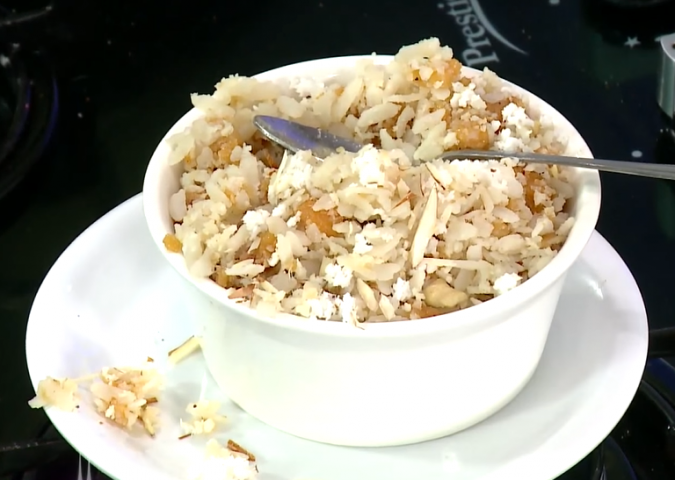
The poha prasadam is a famous prasad made as offering to Lord Krishna temples. It is also made as prasad and offered to devotees during the festival of Janmashtami.
Ingredients:
- Flattened rice – 1 cup
- Jaggery – 0.75 cup
- Fresh coconut – 0.5 cup
- Nuts (cashew and raisins) – 0.25 cup
- Ghee – 1 teaspoon
- Cardamom – 1 pinch
Steps
- Wash and soak the flattened rice in water for a few minutes.
- In a mixing bowl, add the soaked flattened rice, jaggery, and freshly grated coconut.
- In a pan, heat some ghee and lightly roast the nuts.
- Once the nuts are roasted, add the nuts to the poha mixture.
- Add cardamom powder and mix all the ingredients well.
- The poha prasadam is ready to be served.
-
 Planning to Fast During Navratri? Here are 9 Quick and Healthy Recipes for Your Navratri Fast in 2019!
Planning to Fast During Navratri? Here are 9 Quick and Healthy Recipes for Your Navratri Fast in 2019!
-
 क्या आप नवरात्रि के लिए उपवास कर रहे हैं? यहां आपके लिए 9 नवरात्रि व्यंजन बनाने की विधि है जो आपके लिए शुद्ध, स्वादिष्ट और स्वस्थ की गारंटी है (2020)
क्या आप नवरात्रि के लिए उपवास कर रहे हैं? यहां आपके लिए 9 नवरात्रि व्यंजन बनाने की विधि है जो आपके लिए शुद्ध, स्वादिष्ट और स्वस्थ की गारंटी है (2020)
-
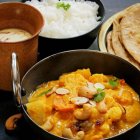 10 Easy to Make Navratri Fasting Recipes to Keep Your Strength Up for other Festivities + Why Eating Right is So Important at This Time (2019)
10 Easy to Make Navratri Fasting Recipes to Keep Your Strength Up for other Festivities + Why Eating Right is So Important at This Time (2019)
-
 यदि आप नवरात्रि के लिए उपवास कर रहे हैं, तो यहां आपके लिए 6 व्यंजन हैं जो बनाने में बहुत आसान और शीघ्र हैं। साथ में स्वस्थ तरीके से उपवास करने के टिप्स (2019)
यदि आप नवरात्रि के लिए उपवास कर रहे हैं, तो यहां आपके लिए 6 व्यंजन हैं जो बनाने में बहुत आसान और शीघ्र हैं। साथ में स्वस्थ तरीके से उपवास करने के टिप्स (2019)
-
 If You're Fasting for Navratri, Here are 6 Easy-to-Make Recipes for You (2019)!
If You're Fasting for Navratri, Here are 6 Easy-to-Make Recipes for You (2019)!
Maintain hygiene and keep everything neat and clean
When it comes to culture and people's faith, one should take extra care. Prasad making is also one of those things and is on fact very much a part of your worship. Right from the time you set the intention to make it, getting together the ingredients and the actual preparation of the prasad must be done carefully and thoughtfully. The love and effort your put into preparing it serves as an extension of your devotion, and not merely how you make the offering. Don't just go through the steps of making and offering it to the gods, be mindful the whole time. This care will then pass on to anyone else you offer the prasad to.

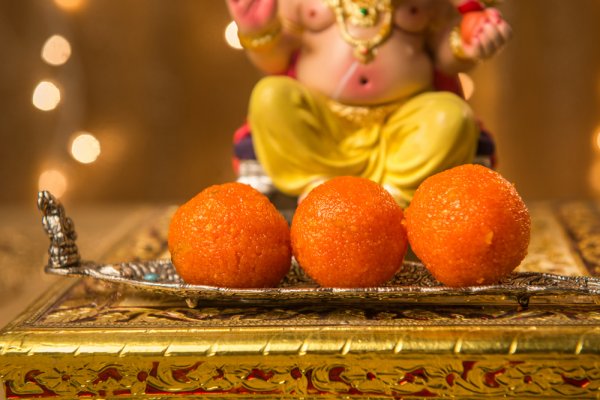
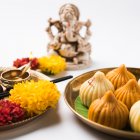

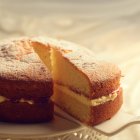

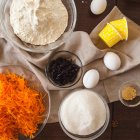


 Highlight the Best Facets of Your Incomparable Beauty: Discover the Best Face Highlighter Currently Available in India and Everything You Need to Know About Using Face Highlighters for Maximum Effect (2023)
Highlight the Best Facets of Your Incomparable Beauty: Discover the Best Face Highlighter Currently Available in India and Everything You Need to Know About Using Face Highlighters for Maximum Effect (2023)
 Forget the Blemishes and Get that Picture Perfect Flawless Radiance on Your Face: Check out the Best Foundations for Oily Skin Currently Available in India and Everything You Need to Know About Makeup Foundations (2023)
Forget the Blemishes and Get that Picture Perfect Flawless Radiance on Your Face: Check out the Best Foundations for Oily Skin Currently Available in India and Everything You Need to Know About Makeup Foundations (2023)
 Make Your Presence Felt Wherever You Go: Discover the Best Perfumes Under 2000 for Both Men and Women to Announce Your Arrival and Make Any Occasion Memorable (2023)
Make Your Presence Felt Wherever You Go: Discover the Best Perfumes Under 2000 for Both Men and Women to Announce Your Arrival and Make Any Occasion Memorable (2023)
 Protect Your Oily Skin from the Harmful Rays of the Sun: Discover the Best Gel Based Sunscreens for Oily Skin and Everything You Need to Know Before Buying One (2023)
Protect Your Oily Skin from the Harmful Rays of the Sun: Discover the Best Gel Based Sunscreens for Oily Skin and Everything You Need to Know Before Buying One (2023)
 Minor Blemishes and Wrinkles Affecting Your Confidence? Check out the Best BB Creams to Conceal Your Worries and Nourish Your Skin to Restore the Healthy, Radiant and Glowing Complexion Back Again (2023)
Minor Blemishes and Wrinkles Affecting Your Confidence? Check out the Best BB Creams to Conceal Your Worries and Nourish Your Skin to Restore the Healthy, Radiant and Glowing Complexion Back Again (2023)
